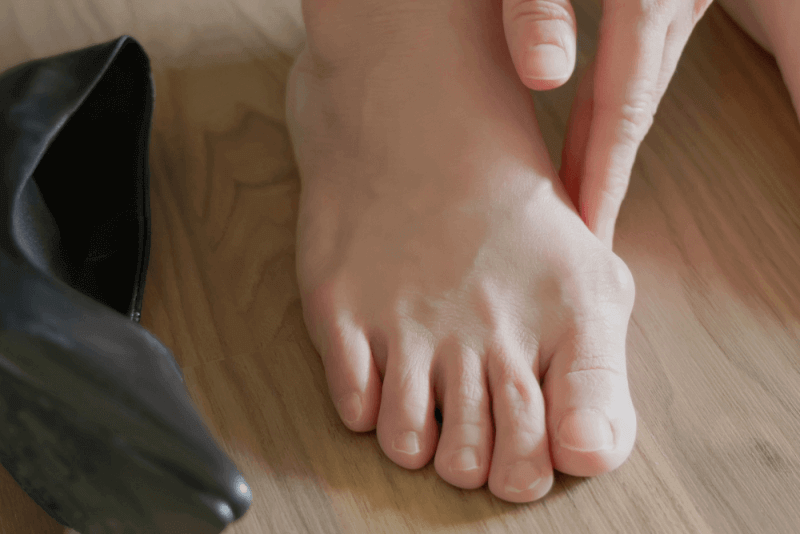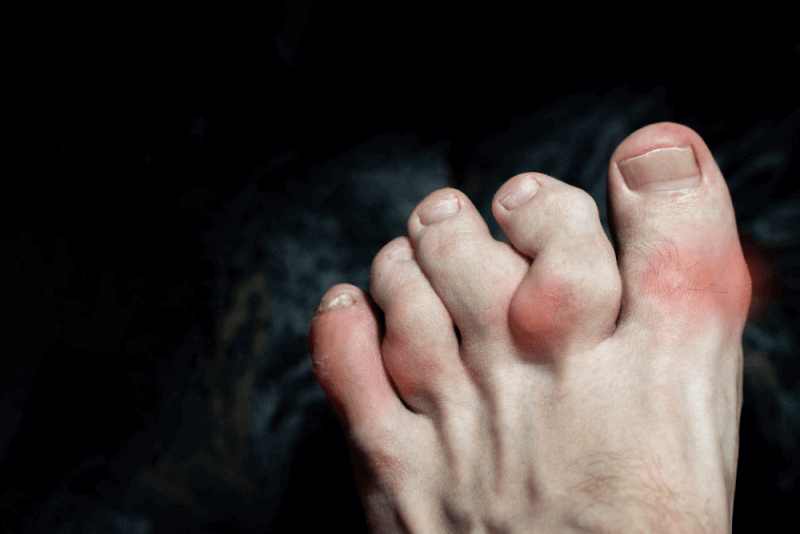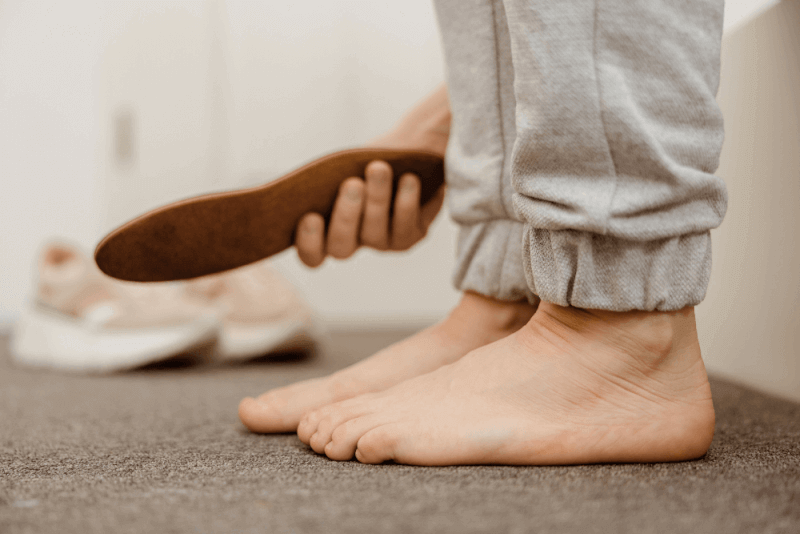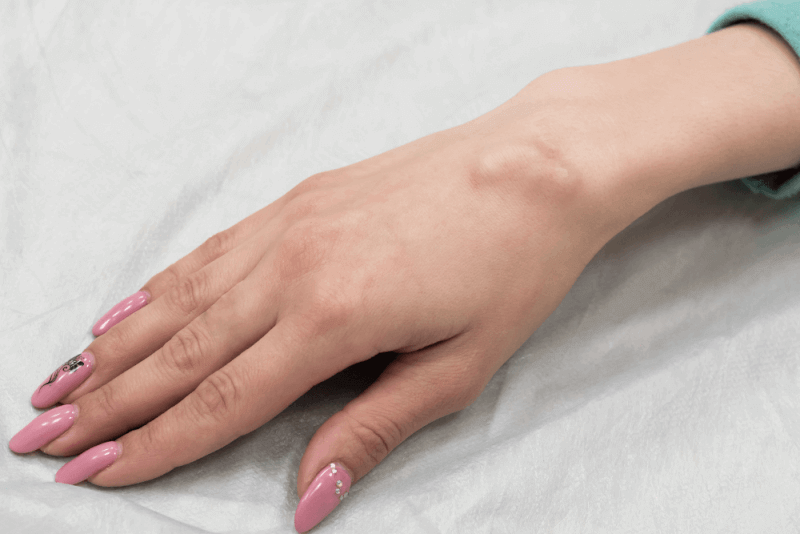What is Hallux Valgus?
Hallux valgus is known as a bunion of the big toe. In patients with hallux valgus, the big toe noticeably shifts toward the outer side of the foot. This shift is permanent and occurs naturally, leading to pain and difficulties in walking.
Although it primarily affects the big toe, other toes may also be impacted by deformities. As the big toe turns outward, it can push under the adjacent toes, leading to hammer toe formation. The 2nd and 3rd toes, in particular, may develop painful calluses.
Causes of Hallux Valgus
- Hallux valgus is more commonly seen in women. The occurrence in men is significantly lower, indicating that being female predisposes one to hallux valgus.
- There is a high likelihood of developing hallux valgus if it runs in the family. It is usually caused by an inherited faulty mechanical structure of the foot.
- Wearing pointed, high-heeled, or narrow-toed shoes frequently increases the risk of developing hallux valgus.
- It is more common in individuals with flat feet.
- Those with weight problems may develop hallux valgus.
- It is seen more frequently in people with short Achilles tendons.
- People with rheumatic problems are also at a higher risk of developing hallux valgus.
Symptoms of Hallux Valgus
- The most noticeable symptom of hallux valgus is the protrusion of the big toe.
- Severe pain during walking
- Pain during toe movement
- Redness on the big toe depending on the shape and tightness of the shoe
- Discomfort
- Calluses on the foot
- Limited movement
Diagnosis of Hallux Valgus
An X-ray of the foot is the best imaging method to diagnose hallux valgus. Since hallux valgus progresses over time, monitoring the progression with periodic X-rays is important. Nerve compression is often observed between the 3rd and 4th toes in patients with hallux valgus. Physical examination should also focus on this nerve compression.
Treatment Methods for Hallux Valgus
Hallux valgus treatment is divided into surgical and non-surgical methods. Treatment planning should consider the patient's age, the factors contributing to hallux valgus, and clinical findings.
- Wearing shoes with soft leather
- Using shoes that do not squeeze the foot
- Wearing shoes that do not press on the toes
- Using soft silicone pads on the big toe protrusion
- Applying ice packs intermittently to reduce pain and swelling
- Wearing a night splint to keep the big toe straight
- Using a toe spacer to correct the deformity and reduce tension in the joint capsule, relieving pain
- Surgical correction of the big toe
Hallux Valgus Surgery
Hallux valgus surgery is performed if pain and walking difficulties persist despite non-surgical methods. The surgery depends on the condition of the capsule, tendons, and ligaments around the big toe.
- One method involves removing the bone protrusion. While this offers short-term relief, hallux valgus may recur.
- Corrective procedures are performed to realign the affected bone and stabilize the joints.
Methods of Hallux Valgus Surgery
Hallux valgus surgery, also known as osteotomy, is necessary when the bunion becomes extremely painful and irreversible. The protruding part of the big toe, known as the bunion, is removed. Then, the bone and joint area of the big toe are restored to their anatomical position. Hallux valgus surgery typically takes about 1 hour.
Benefits of Hallux Valgus Surgery
- Improves quality of life.
- Relieves foot pain and inflammation.
- Restores the appearance of the foot to its original state.
- Corrects deformities, providing relief.
Complications of Hallux Valgus Surgery
Like any surgical operation, hallux valgus surgery can result in complications. The most common complication is infection. Other issues such as bleeding, redness, and swelling may also occur at the surgical site.
Hallux Valgus Exercises
Physical therapy and exercises play a crucial role in treating the pain and deformities caused by hallux valgus. Moving the big toe in the opposite direction of the deformity can help realign the bone and joints to their ideal anatomy, preventing the progression of hallux valgus.
Recovery Process of Hallux Valgus
The progression of hallux valgus can be prevented with medication, physical therapy, and appropriate footwear during the recovery process. If the condition does not improve, surgery may be necessary. After surgery, if soft tissue is involved, the person can usually return to daily routines within about a week. If the bone is affected, the recovery process may take longer.
Risk Factors for Hallux Valgus
- Hallux valgus is often a genetically inherited condition, with a high likelihood of developing in those with a family history of the disorder.
- Individuals with flat feet
- Those with weight issues
- Individuals with short Achilles tendons
- People with excessive arches in their feet
- Those with rheumatic issues are at a higher risk of developing hallux valgus.
Hallux Valgus Shoes
- Hallux valgus shoes are made with soft and flexible materials, providing comfort to areas of the foot with swelling and pain.
- The area around the big toe is wider, preventing the big toe from being squeezed and ensuring comfort.
- Special insoles are often included in hallux valgus shoes, offering support and making walking easier.
- In addition to functionality, hallux valgus shoes also feature stylish designs.








